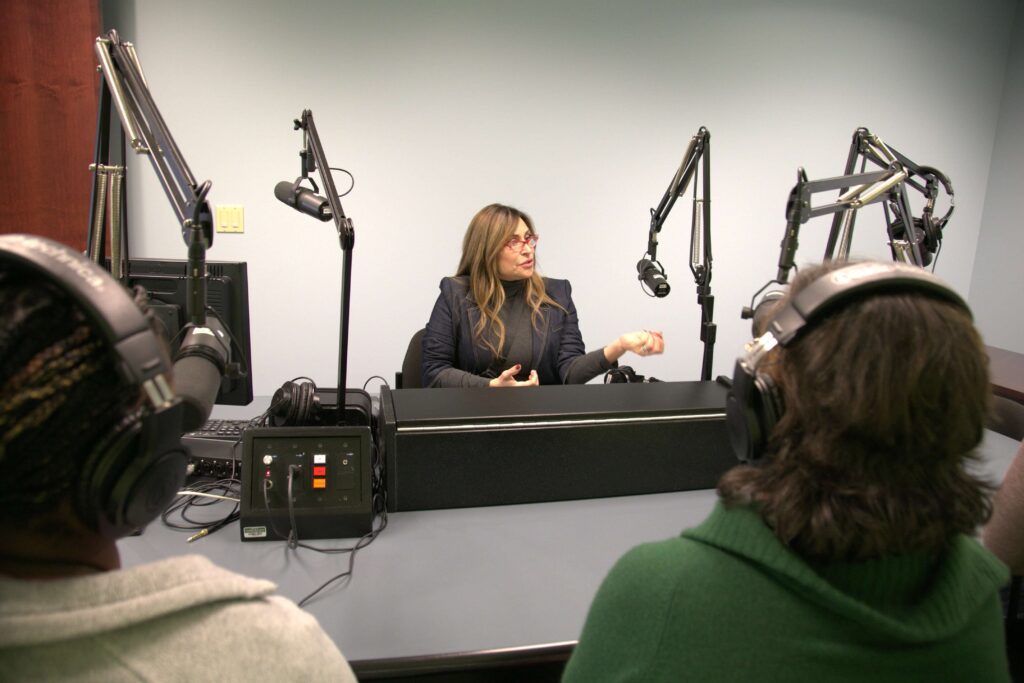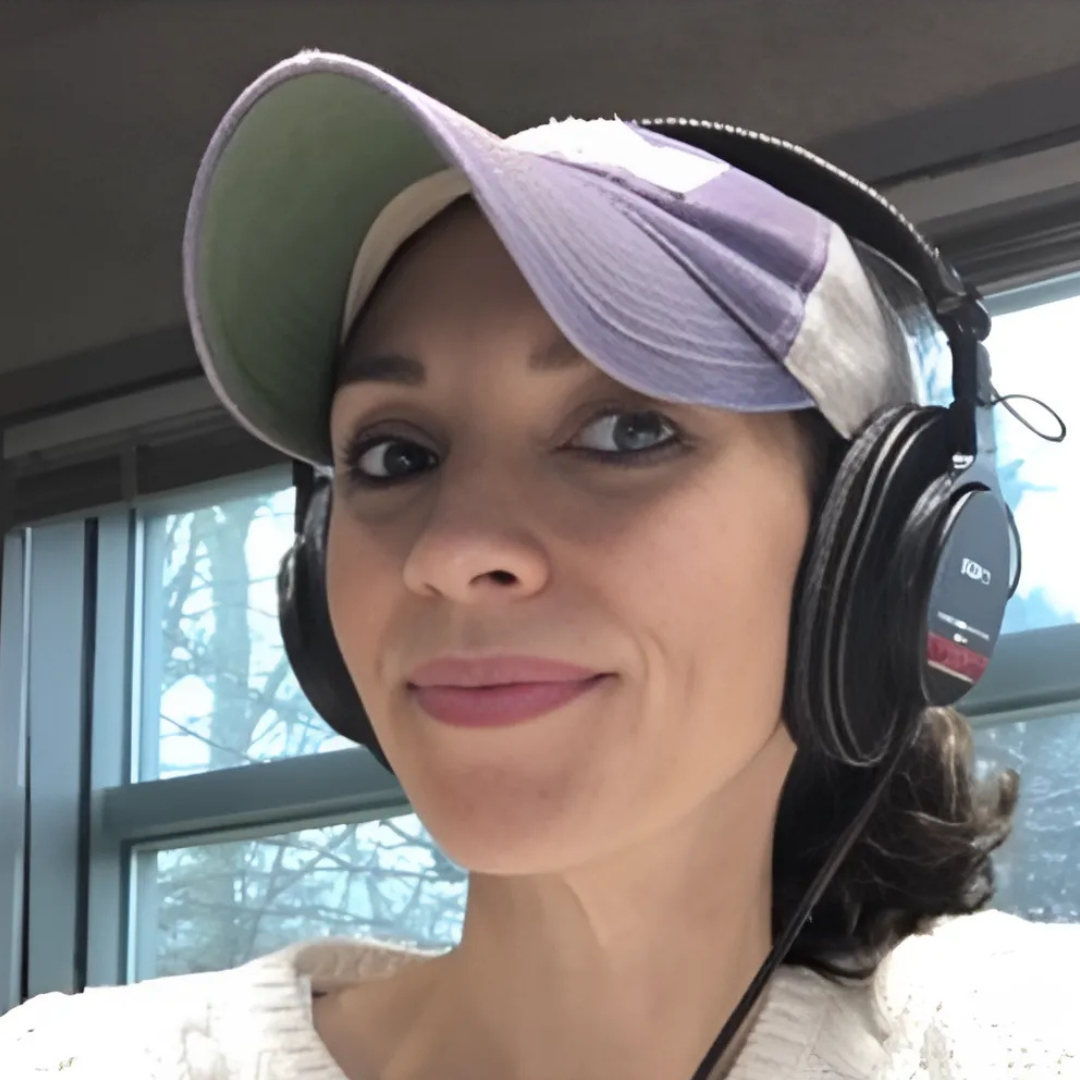As storytellers in the digital age, we have access to incredible technology, sophisticated editing software, and high-quality equipment. Yet amid all these advancements, one fundamental tool remains irreplaceable: your voice.
Welcome to your comprehensive guide on developing your broadcast voice – that authentic, engaging instrument that connects you directly with your audience. Whether you’re crafting audio stories, hosting podcasts, or creating video content, your voice is the bridge between your creative vision and your listener’s experience.
The Myth of the “Perfect” Broadcasting Voice
Let’s start by dispelling a common misconception: great broadcasters aren’t born with perfect voices – they train them.
The most compelling voices in media aren’t necessarily the deepest or most polished. Rather, they’re authentic, consistent, and skillfully managed. Think about the voices that have captivated you on NPR, in documentaries, or on your favorite podcasts. What makes them effective isn’t some innate vocal gift but rather a combination of technique, practice, and authenticity.
NPR hosts like Ari Shapiro and Audie Cornish exemplify this beautifully. Their voices aren’t artificially dramatic or unnaturally perfect – they’re conversational, warm, and genuine, yet technically sound.
Discovering Your Authentic Broadcast Voice
Your broadcast voice should fundamentally be YOU – just slightly amplified and refined. Here’s how to approach finding that sweet spot:
The Conversational Connection
The most effective broadcast voices establish an intimate, one-to-one connection. Rather than projecting to an imagined crowd, visualize speaking directly to a single, interested listener. This mental shift transforms your delivery from broad proclamation to personal conversation.
The Pitch Perfect Principle
Many broadcasters naturally adopt a slightly lower pitch than their everyday speaking voice. This subtle adjustment can add warmth and authority without sounding artificial. To find your optimal broadcast pitch:
- Record your normal speaking voice.
- Try several variations slightly below your natural pitch.
- Listen for the version that sounds most authentic while maintaining clarity.
- Practice until this modified pitch feels natural.
The “Slightly Better You” Approach
Think of your broadcast voice as the version of your speaking voice that emerges when you’re at your best – well-rested, focused, and engaged. It’s not about creating an alternate persona but rather accessing your optimal vocal quality consistently.
Your Daily Vocal Warm-up Routine
Just as athletes warm up before performance, broadcasters need to prepare their vocal instruments. The following 5-minute routine can dramatically improve your vocal quality, articulation, and projection.
Breathing Fundamentals (2 minutes)
Your breath is the foundation of vocal production. Proper breathing technique provides the support and control necessary for consistent vocal delivery.
Diaphragmatic Breathing:
- Place one hand on your stomach and one on your chest.
- Inhale slowly through your nose, feeling your stomach expand more than your chest.
- Exhale gradually, maintaining control throughout.
Breath Control Exercise:
- Inhale for 4 counts.
- Hold for 4 counts.
- Exhale for 8 counts.
- Repeat five times.
The “Whispered Ah” Technique:
- Take a deep diaphragmatic breath.
- As you exhale, produce a relaxed whispered “ah” sound.
- Focus on consistent airflow and an open throat feeling.
- This technique helps release tension in your vocal mechanism.
Articulation Development (2 minutes)
Clear articulation ensures your message is understood. These exercises strengthen and increase the flexibility of your articulators – lips, tongue, and jaw.
Classic Tongue Twisters:
- “Red leather, yellow leather” (repeat 5 times with increasing speed)
- “The lips, the teeth, the tip of the tongue” (exaggerate mouth movements)
- “Peter Piper picked a peck of pickled peppers” (focus on precision)
Articulator Workout:
- Open and close your jaw widely but without tension.
- Circle your tongue around the outside of your teeth in both directions.
- Practice lip trills (blowing air through loosely closed lips).
Resonant Consonant Series:
- Exaggerate “MA-ME-MI-MO-MU” and “LA-LE-LI-LO-LU” sequences.
- Focus on crisp, energetic consonants and open vowels.
Projection and Resonance (1 minute)
Proper projection allows your voice to carry without straining. These exercises develop resonance – the rich, vibrant quality that makes voices engaging.
Volume Ladder:
- Count from 1-10 while gradually increasing volume.
- Ensure the increased volume comes from breath support, not throat tension.
Mask Resonance Exploration:
- Hum a simple tune while focusing on feeling vibrations in your facial mask area (nose, cheeks, forehead).
- Gradually open to vowels while maintaining the forward, resonant sensation.
Siren Exercise:
- Glide from your lowest comfortable note to your highest on a “wee” sound.
- Descend back down on an “oh” sound.
- This stretches your vocal range and encourages resonance.
Technical Approaches to Better Vocal Delivery
Microphone Technique Mastery
Even the best voice can be compromised by poor microphone technique. Here’s how to optimize your relationship with the mic:
Ideal Positioning:
- Maintain consistent distance (approximately a fist away for most microphones).
- Position slightly off-axis (speaking across rather than directly into the microphone).
- This reduces plosives (those popping ‘p’ and ‘b’ sounds) and creates a more natural sound.
Environmental Considerations:
- Create a “dead” space with acoustic treatment or simple household items (blankets, pillows).
- Eliminate background noise sources (computers, air conditioners, etc.).
- Use a pop filter or create a DIY version with a sock and coat hanger.
Script Markup and Preparation
Professional broadcasters develop personal notation systems to guide their delivery:
Practical Markup System:
- Forward slash (/) for brief pauses.
- Double slash (//) for longer pauses.
- Underline or bold words requiring emphasis.
- Arrows for rising or falling inflection.
- Notes on emotional tone in margins.
Pre-reading Practice:
- Always read your script aloud before recording.
- Identify troublesome word combinations or tongue twisters.
- Mark breath points at natural syntax breaks.
Pacing and Emphasis Techniques
The rhythm of your delivery significantly impacts comprehension and engagement:
Strategic Pacing:
- Slightly slow down for important information or complex concepts.
- Speed up slightly for supplementary details or transitional passages.
- Vary your pace to maintain interest and emphasize key points.
Emphasis Tools:
- Volume variation (slightly louder for key points).
- Pitch modulation (slightly higher pitch for emphasis).
- Strategic pauses before and after crucial information.
Today’s Practical Exercise
To immediately apply these concepts, try this exercise:
- Select a paragraph from your audio story script.
- Record yourself reading it with your current approach.
- Apply the techniques we’ve discussed:
- Optimize your breathing.
- Enhance your articulation.
- Mark up your script for pacing and emphasis.
- Visualize speaking to just one interested listener.
- Record a second version.
- Compare both recordings, noting specific differences in:
- Clarity and understanding.
- Emotional engagement.
- Overall listenability.
- Technical quality.
This before-and-after comparison will provide tangible evidence of how these techniques can transform your delivery.






























